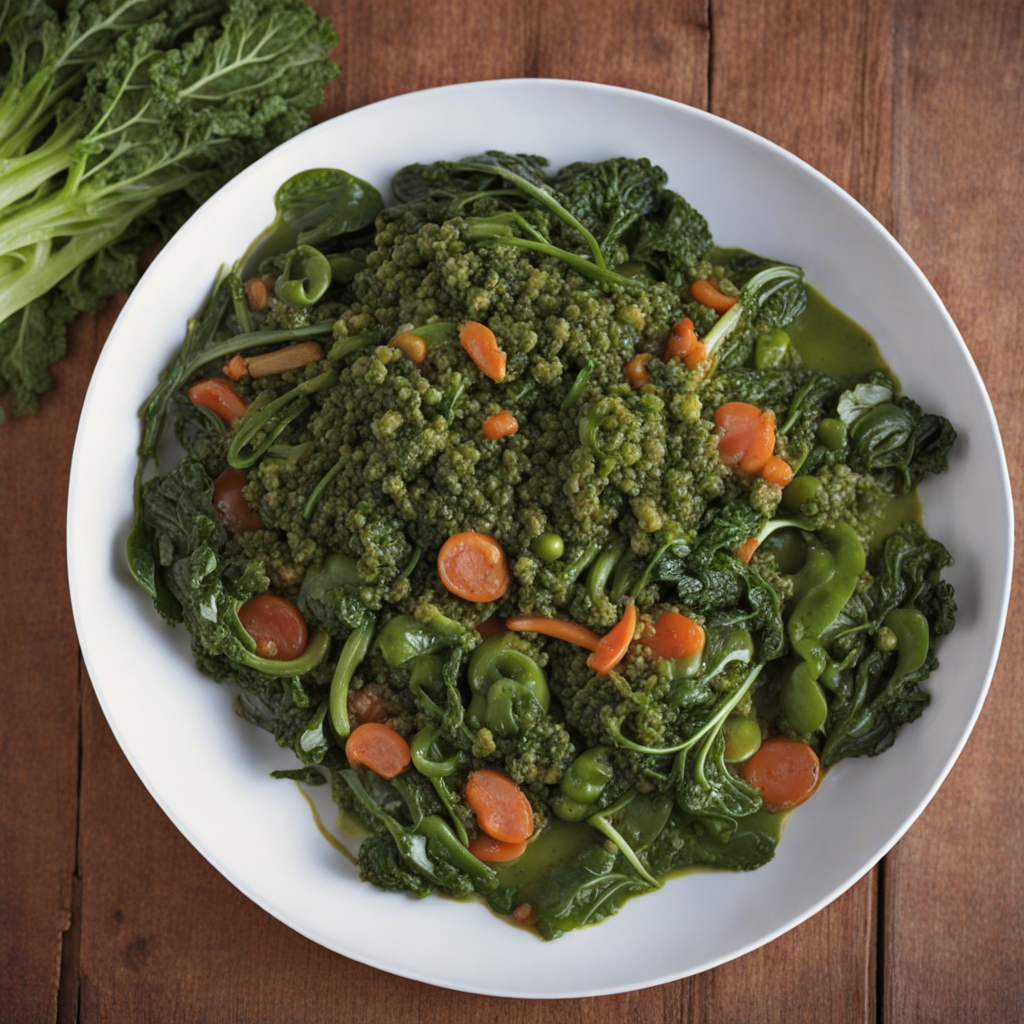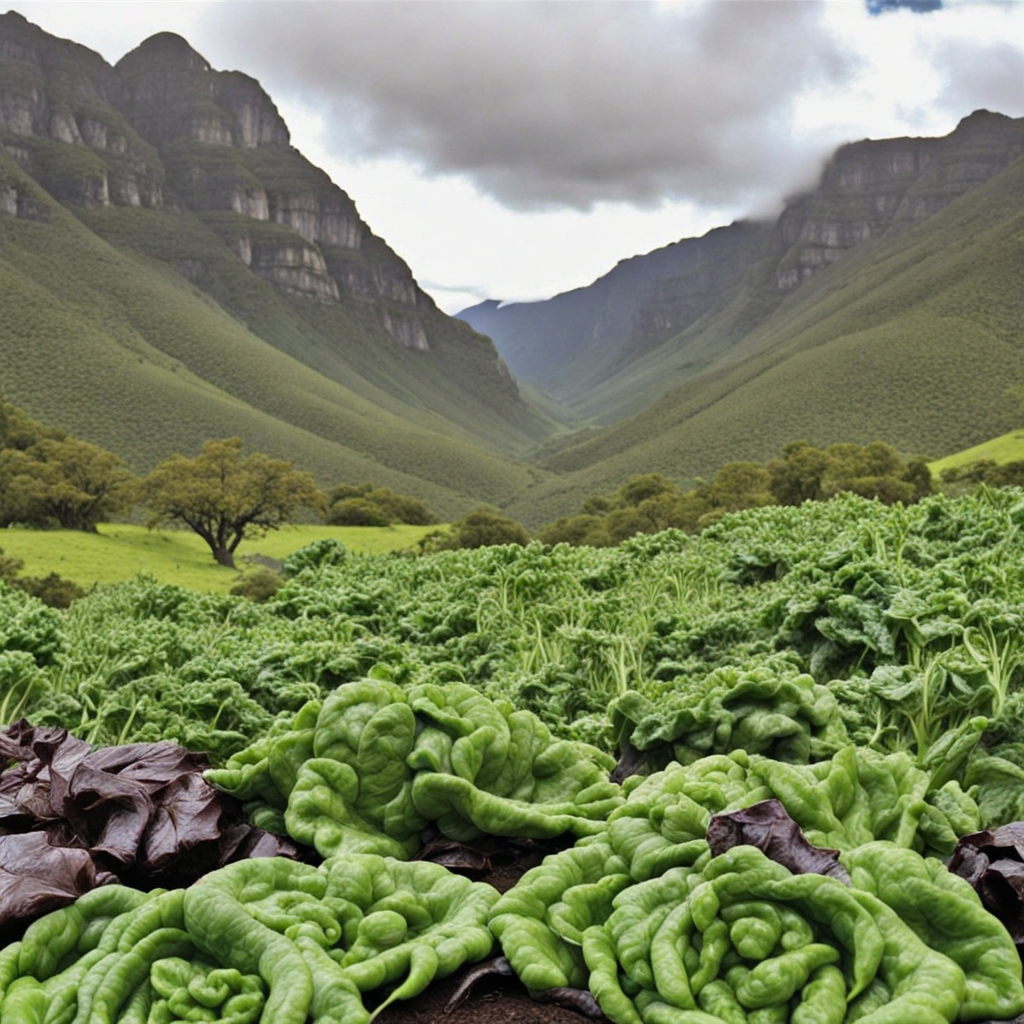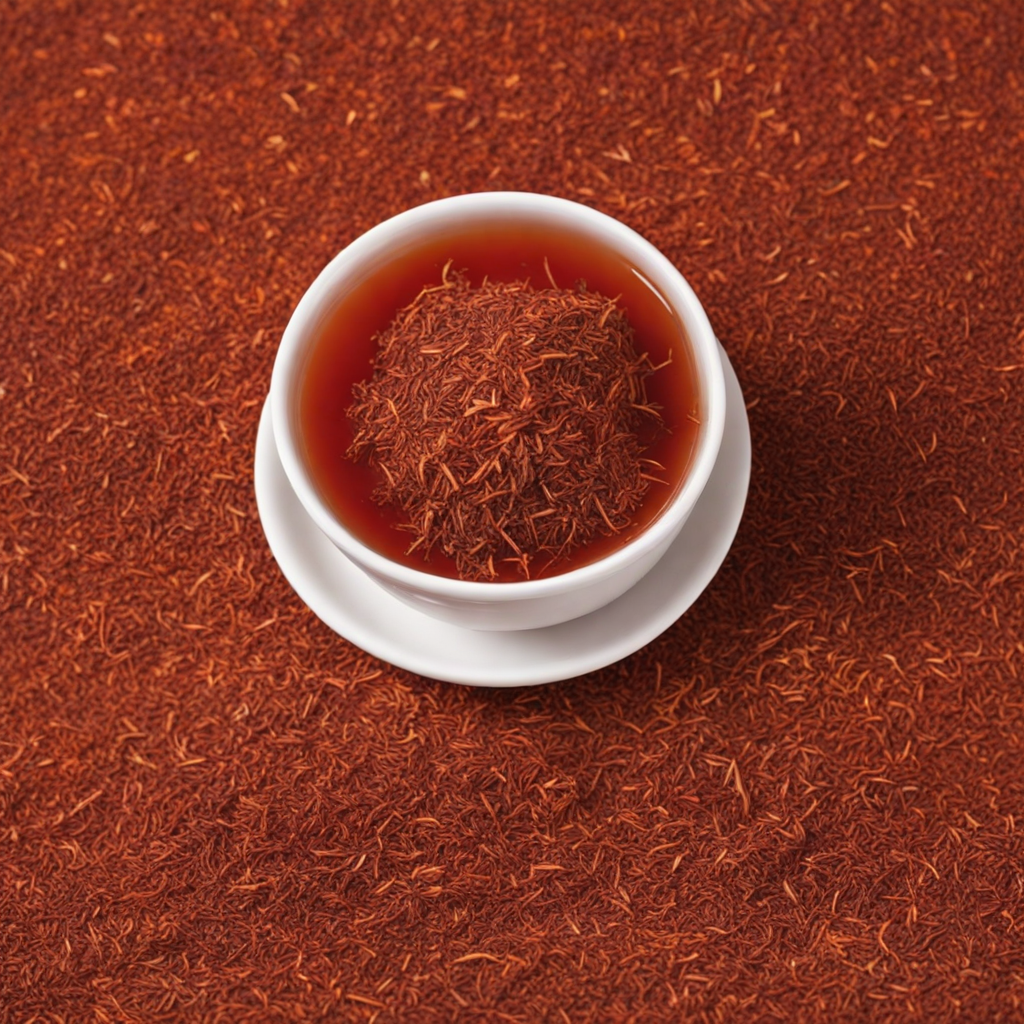Marog
Marog, often referred to as wild spinach, is a traditional leafy green vegetable that is cherished in South African cuisine, particularly among various rural communities. Its vibrant green leaves are not only a staple in local diets but also pack a nutritious punch, being rich in vitamins and minerals. The taste of Marog is unique, with a slightly earthy and nutty flavor, often compared to that of common spinach but with a more complex, robust profile. When cooked, it maintains a tender texture while absorbing the flavors of accompanying ingredients, making it an ideal candidate for a variety of dishes. In the kitchen, Marog can be prepared in numerous ways, showcasing its versatility. It is commonly sautéed with onions and spices, creating a fragrant dish that complements meat or serves as a hearty vegetarian option. Some cooks prefer to incorporate it into stews and soups, where its flavors meld seamlessly with other ingredients, enhancing the overall dish. Additionally, it can be enjoyed fresh in salads, providing a nutritious and vibrant addition that adds a burst of color and flavor. The cultural significance of Marog extends beyond its culinary uses; it symbolizes the connection to the land and traditional farming practices. For many South Africans, harvesting Marog from the wild is not just a means of sustenance but also a cherished activity that fosters a deep respect for nature. As more people seek to explore authentic tastes and reconnect with indigenous ingredients, Marog is emerging as a sought-after delicacy that invites food lovers to experience a true taste of South Africa.
How It Became This Dish
The History of Marog: A South African Culinary Treasure #### Origins of Marog Marog, a term that refers to a variety of wild edible greens, is deeply rooted in the culinary traditions of South Africa, particularly among the indigenous communities of the region. The word itself is derived from the Tswana language, where it denotes a range of leafy vegetables that have been foraged and consumed for generations. The practice of foraging for wild greens is a testament to the resourcefulness and deep connection to the land that characterizes many South African cultures. The origins of marog can be traced back to the pre-colonial era when indigenous peoples relied heavily on the diverse plant life in their surroundings for sustenance. The region's climate and biodiversity allowed for a variety of wild vegetables to flourish, many of which were not only nutritious but also held significant cultural importance. Communities would gather these greens from the wild, often accompanied by rituals and traditional knowledge passed down through generations. #### Cultural Significance In the context of South African cuisine, marog is more than just a food item; it embodies the essence of traditional knowledge, community practices, and cultural identity. For many indigenous groups, particularly the Basotho, Xhosa, and Tswana, the gathering and preparation of marog is a communal activity that fosters social bonds and reinforces cultural heritage. The wild greens are often prepared in traditional ways, such as boiling, steaming, or sautéing, and are frequently served with staple foods like maize porridge (pap), or incorporated into stews. Marog also plays a significant role in the traditional medicinal practices of various South African communities. Many of the wild greens believed to belong to the marog category are recognized for their health benefits, including high levels of vitamins and minerals. This aligns with the holistic approach to health that is characteristic of many indigenous cultures, where food is seen not only as sustenance but also as a means of maintaining physical and spiritual well-being. #### The Development of Marog Over Time As South Africa underwent significant social, political, and economic changes throughout the 20th and 21st centuries, the status and perception of marog also evolved. The impact of colonialism, urbanization, and globalization led to shifts in dietary patterns and agricultural practices. Traditional foraging diminished as urban areas expanded and access to wild spaces became limited. Consequently, many younger generations, especially those living in cities, became distanced from their culinary heritage. However, in recent years, there has been a resurgence of interest in traditional foods, including marog, as South Africans seek to reconnect with their cultural roots and promote sustainable eating practices. The slow food movement, which emphasizes local and traditional food systems, has gained traction, encouraging individuals and communities to reclaim their culinary heritage. This has led to a renewed appreciation for marog, with initiatives aimed at documenting traditional foraging practices and promoting the nutritional benefits of wild greens. In addition, chefs and food advocates have begun to incorporate marog into contemporary South African cuisine, experimenting with its flavors and textures in innovative ways. From fine dining establishments to local food markets, marog is being celebrated not only for its taste but also for its story, bridging the gap between past and present. This culinary revival is crucial in fostering a sense of pride in indigenous foods and encouraging sustainable food practices. #### Culinary Uses of Marog Marog encompasses a variety of species, each with its unique flavor profile and culinary applications. Some common varieties include *Amaranthus* (African spinach), *Cleome gynandra* (spider plant), and *Portulaca oleracea* (purslane). The versatility of these greens allows them to be used in a myriad of dishes, from simple sautéed preparations to more complex stews and salads. In traditional cooking, marog is often prepared with onions, tomatoes, and spices, enhancing the flavors and bringing out their natural sweetness. The greens are typically cooked until tender, retaining their vibrant color and nutritional value. The dish can be served as a side, complementing starchy staples, or as a main component, showcasing the unique flavors of wild ingredients. The resurgence of marog in modern South African cuisine has also inspired creative interpretations. Chefs are now using marog in salads, smoothies, and even as a filling for pastries, highlighting its versatility and appealing to a broader audience. This fusion of traditional and contemporary cooking techniques not only preserves the culinary heritage of marog but also introduces it to new generations and cultures. #### Conclusion The history of marog is a captivating narrative that intertwines the themes of cultural identity, sustainability, and culinary innovation. As South Africa continues to navigate the complexities of its diverse heritage, marog stands as a symbol of resilience and adaptability. While the journey from wild greens to contemporary cuisine may have evolved, the essence of marog remains rooted in the traditions and practices of the communities that have cherished it for centuries. In a world increasingly focused on sustainable eating and local food systems, marog offers a compelling case for the importance of preserving traditional knowledge and practices. As more people embrace the rich tapestry of South African cuisine, marog serves not only as a delicious and nutritious food source but also as a reminder of the deep connections between culture, community, and the land. Through the continued appreciation and celebration of marog, we honor the past while paving the way for a more sustainable and culturally rich future.
You may like
Discover local flavors from South Africa







